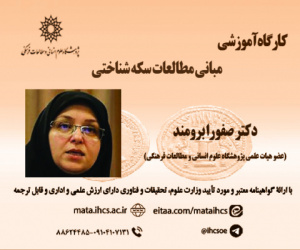خطاهای واژگانی در انشاهای فارسی نوشته شده توسط دانشجویان عرب زبان: تحلیل خطا و تحلیل مقابلهای (مقاله علمی وزارت علوم)
درجه علمی: نشریه علمی (وزارت علوم)
آرشیو
چکیده
این مقاله با بررسی خطاهای واژگانی برگرفته از 200 انشای نگاشته شده توسط فارسی آموزان عرب زبان، رویکرد تازه ای را به آموزش های واژگانی در چارچوب «تحلیل خطا و تحلیل مقابله ای» پیشنهاد می دهد. از این تعداد، 100 زبان آموز در محیط فارسی زبان و 100 زبان آموز دیگر در محیط غیرفارسی زبان درس می خواندند. در انشای این افراد تعداد 927 خطا یافت شد. طبقه بندی لاچ (Llach, 2011) از خطاهای واژگانی که در این مقاله به کار گرفته شده، به آن دسته از خطاهای معنایی و صوری می پردازد که خاستگاهی بین زبانی و درون زبانی دارند. یافته های تحلیلی که با نرم افزار آماری اس.پی.اس.اس به دست آمد، نشان می دهد که در 5. 90 درصد از 200 انشاء دارای خطا، بیشترین موردی که زبان آموزان مرتکب شدند، خطاهای درون زبانی بود. خطاهای رایج در میان زبان آموزان خطاهای صوری و معنایی بودند که به ترتیب، 72 درصد و 5. 50 درصد از 200 انشا دارای خطا یافت شدند. همچنین، پژوهش حاضر نشان می دهد که رابطه آماری معناداری بین خطاهای بین زبانی (تداخل زبان اول) و محیط غیرفارسی زبان وجود دارد. این مسئله درستی نسخه میانی از تحلیل مقابله ای را اثبات می کند. داده های این جستار می تواند به عنوان راهنمایی برای پژوهشگران در نگارش فرهنگ واژگان و اصطلاح های خطاهای زبانی به کار گرفته شود.A Contrastive and Error Analysis of Lexical Errors in Persian Essays of Arab Students
When language learners select words improperly or inaccurately due to either interference from their native language (also known as the mother tongue or L1), or a lack of knowledge of the target language (known as L2), they confuse the listener or the reader. The present study is significant because lexical errors are a neglected aspect of language learning that requires attention. The study adopts an error analysis and contrastive analysis joint theoretical framework to analyze and study lexical errors extracted from 200 compositions written by Arab learners of Persian. The two approaches form a framework through which inter-lingual and intra-lingual errors can be identified and studied.The moderate version of contrastive analysis is used to study the inter-language errors. This approach provides a clear ‘equation’: wherever patterns are minimally distinct in form or meaning in one or more systems, confusion may result”. (Oller, J. & Ziahosseiny, S.M., 1970). In addition, the error analysis approach will allow the study of intra-language errors which mainly happen due to language (L2) ignorance (Keshavarz, 2011), based on Llach’s taxonomy of errors as it seems to be the most comprehensive and economic framework simultaneously.Research on this topic remains limited, with most studies focusing on grammatical errors while lexical errors have received less attention. According to the literature, no studies have addressed lexical errors in Persian from this viewpoint. This includes providing an appropriate taxonomy of errors, suggesting ways to learn to deal with these errors, and using these data to construct a dictionary of lexical errors.Previous studies discussed in the literature review including (Qamsari, 2007), (Tahrezadeh, 2015), (Dehkhoda, Z. & Motavalian, R., 2014), (Ghiassi Zarch, A. & Jafari, F., 2020) have focused either solely on error analysis or solely on contrastive analysis. Furthermore, these studies did not specfically study lexical errors but rather different types of errors and how to address them in the teaching process.







